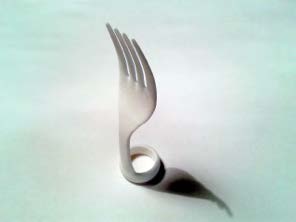I have a background in design, from La Sapienza University, Italy, where I was educated in product design and graphic design. Over the years, I have worked mostly as a visual designer at different levels: logo design, magazine layout, 3d modeling/rendering for architecture and design studios, plus some video editing and illustration work.
In 2010 I moved to Denmark to continue my studies, and joined the SPIRE Centre for Participatory Innovation, as I was interested in methods for considering and including users in design processes. In SPIRE, my interests moved closer to the fields of interaction design and design research. My work, both as a student and as a research assistant, focused on ways to translate the knowledge got in the “field”, through ethnographic inquiry – and especially through video, into something workable and engaging for design teams. I have been collaborating with Jacob Buur on a number of themes related to making sense of videos, such as re-using and re-purposing old footage. With Jacob and Marie Beuthel I have worked on developing tangible tools to make video analysis more collaborative and engaging. Recently, we collaborated with Crown Equipment Corporation, a truck producer, to help researchers and designers analyze videos of expert forklift drivers and how they develop their skills over time. With Jacob and Robb Mitchell I have also worked on analyzing the role that objects play in participatory design and innovation workshops. We focused on the potential of kinetic objects, and how “accidents” due to their unpredictability (i.e objects that might fall, or move, or just not fit together) force people to reframe their views, or creatively develop accounts and ways to incorporate these “problems” in whatever they are trying to accomplish.
Thanks also to these projects, I got increasingly interested in how people make sense of objects and appropriate them in creative and unexpected ways. As part of my PhD, I am trying to investigate this theme, focusing on how mundane objects’ physical and kinetic characteristics are made sense of, and employed to create new functions in use, in real life social interactions. To do so, my project sits at the crossing between interaction design and ethnomethodologically-inspired approaches, where design interventions act as a tools to explore objects’ sense-making in the wild. A challenging and exciting element of this project is also related to finding ways to record, visualize and analyze how this happens,both visually and perhaps interactively with the use of different media.
Aside from my work with objects and video, I have been conducting an ethnographic investigation on second hand shopping practices and how these relate to the theme of sustainable fashion. I also collaborated with Laurens Boer in his research on how critical design methods can help shed light on consumption practices and shopper’s values.
PUBLICATIONS
- Breaching embodied routines: Redesign as a means to make visible skills for the manual use of objects. Agnese Caglio, Tine Larsen, Johannes Wagner. IIEMCA Conference 2015: Living the material world: Book of abstracts. 2015. p. 102.
RESEARCH AREAS
EMBODIED BREACHING
 The project investigates how people engage with unfamiliar objects, and learn to experience and to manage them. Agnese’s design interventions make the bodily routines and their relevance to everyday life visible as e.g. the compensatory strategies that subjects use to be satiated. Embodied breaching can develop into a design tool to create analytic distance to ‘seen but unnoticed’ embodied ways of handling material artifacts in daily life.
The project investigates how people engage with unfamiliar objects, and learn to experience and to manage them. Agnese’s design interventions make the bodily routines and their relevance to everyday life visible as e.g. the compensatory strategies that subjects use to be satiated. Embodied breaching can develop into a design tool to create analytic distance to ‘seen but unnoticed’ embodied ways of handling material artifacts in daily life.
Embodied breaching is about breaching normally invisible bodily routines by modifying everyday objects. Conventional cutlery (e.g. forks and spoons) was modified such that they have a ring instead of a shaft. The redesigned cutlery can be attached to a finger. The material changes eating behavior. Eating routines do no longer work smoothly. The redesign challenges the motoric skills involved in eating. Children spend a long time on learning how to eat properly with a spoon or fork. The resulting highly automatized behavior and the work involved in it becomes accessible through the embodied breach.
